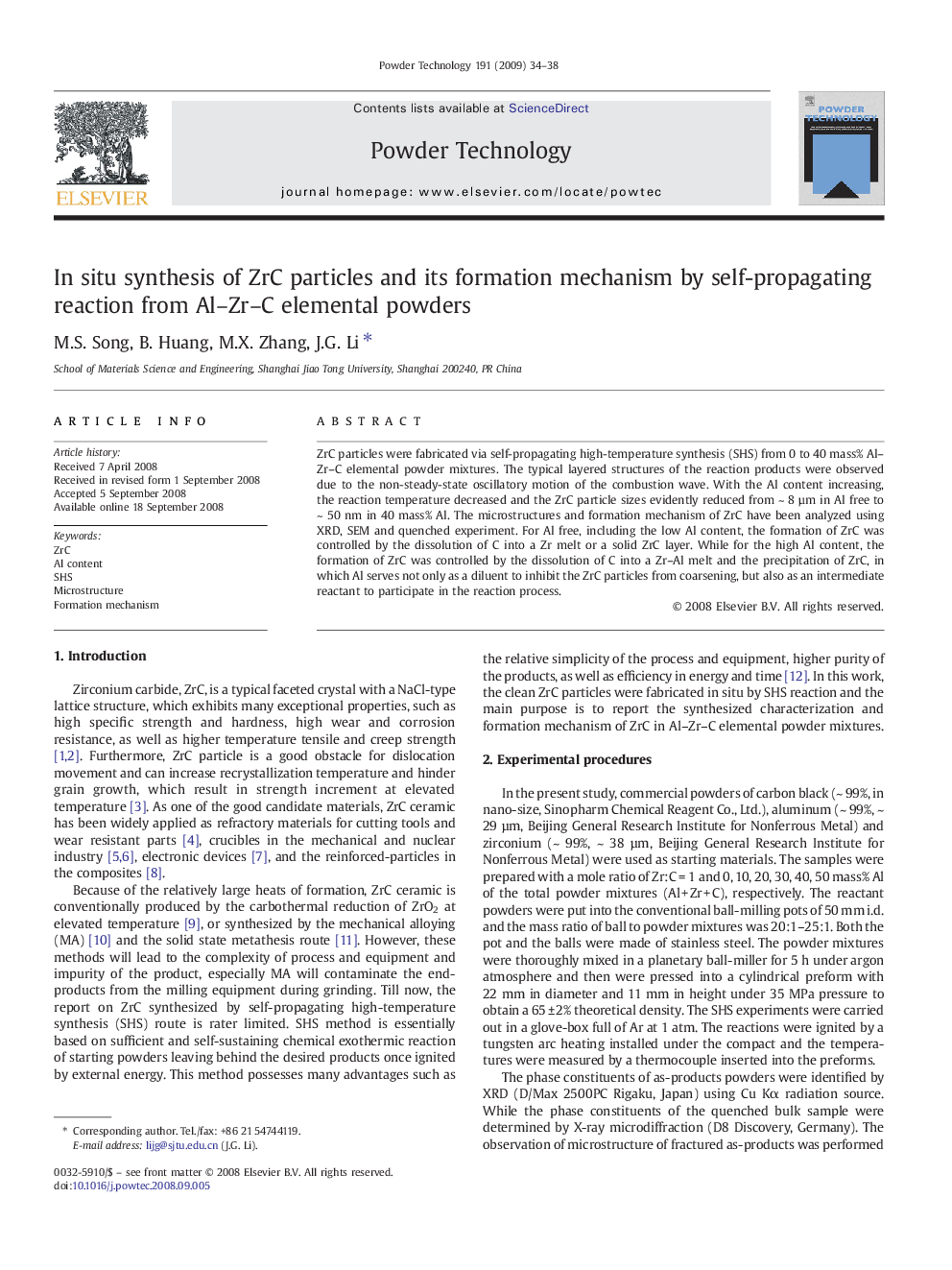| Article ID | Journal | Published Year | Pages | File Type |
|---|---|---|---|---|
| 238560 | Powder Technology | 2009 | 5 Pages |
ZrC particles were fabricated via self-propagating high-temperature synthesis (SHS) from 0 to 40 mass% Al–Zr–C elemental powder mixtures. The typical layered structures of the reaction products were observed due to the non-steady-state oscillatory motion of the combustion wave. With the Al content increasing, the reaction temperature decreased and the ZrC particle sizes evidently reduced from ~ 8 µm in Al free to ~ 50 nm in 40 mass% Al. The microstructures and formation mechanism of ZrC have been analyzed using XRD, SEM and quenched experiment. For Al free, including the low Al content, the formation of ZrC was controlled by the dissolution of C into a Zr melt or a solid ZrC layer. While for the high Al content, the formation of ZrC was controlled by the dissolution of C into a Zr–Al melt and the precipitation of ZrC, in which Al serves not only as a diluent to inhibit the ZrC particles from coarsening, but also as an intermediate reactant to participate in the reaction process.
Graphical abstractFormation path of ZrC particles was investigated by the SHS-quenched experiment from 30 mass% Al–Zr–C compact. The macrograph and XRD results of water-quenched sample show the reaction evolution and formation path of ZrC, namely: Zr(s) + 3Al(s) = ZrAl3(s) → Al(s) = Al(l) → Zr(s) + 3Al(l) = ZrAl3(s) → ZrAl3(s) = ZrAl3(l) → ZrAl3(l) + C(s) = ZrC(s) + Al(l).Figure optionsDownload full-size imageDownload as PowerPoint slide
